If you watch a general coarse angler, or in particular a match man, you will notice how building or feeding the swim properly is a massive part of the match or session. Reading the swim before, and during, a match is a huge part of what sets the top match men apart from the ‘also rans’.
Knowing when, where, what and how much bait to put in is a massive part of the matchman’s armoury. Can a typical ‘modern’ carp angler honestly say that he puts the same amount of effort and thought into his baiting strategy? I think probably not.
Different days, different tactics
I always watch other anglers, particularly when I am new to a water, to see how they approach the session, in particular how they go about baiting the swim and I see a large number of anglers who have a very similar approach.
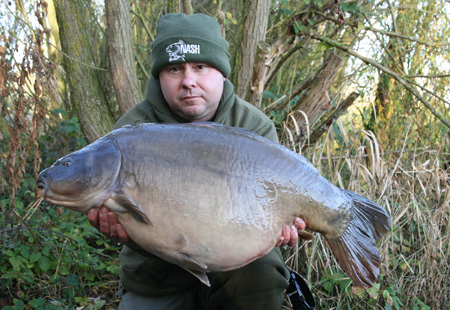 They arrive at the lake, choose a swim, have a plumb around and find a spot with a marker float and once the rig is in place, they fire out around 20-30 boilies, with either a catapult or a throwing stick. The process is then repeated a number of times until all the rods are sorted and for some anglers it’s pretty much job done.
They arrive at the lake, choose a swim, have a plumb around and find a spot with a marker float and once the rig is in place, they fire out around 20-30 boilies, with either a catapult or a throwing stick. The process is then repeated a number of times until all the rods are sorted and for some anglers it’s pretty much job done.
Now I am not knocking this approach – and it is one that I have used myself to great effect over the years – but the problem is if you stick to just one method or particular approach, it won’t always be the right method for that particular situation, or for that particular day.
Maybe it’s time to take a step back, pause, and have a think about our target waters and try to work out what it is we are trying to achieve with our baiting strategy. By scattering a few baits around our hookbait are we trying to get the carp in and feeding without them having a wade through too many freebies before they come across our hookbait? This is exactly what is in my mind when I use this approach, but do the fish come across this situation on too much of a regular basis? And will they actually spook off bait when it is presented to them in such a way? Would a scattered or seemingly more haphazard or random approach be more effective here, maybe with different sized baits, or a single hookbait approach? Does the lake contain large numbers of carp that maraud through the swim wiping all the bait out without any of them getting hooked? Here a large bed of bait may have held the fish longer, increasing the chances of one slipping up. I could go on, but we really need to put as much thought into baiting up as we do into all the other important aspects of carp angling such as rig and bait choice.
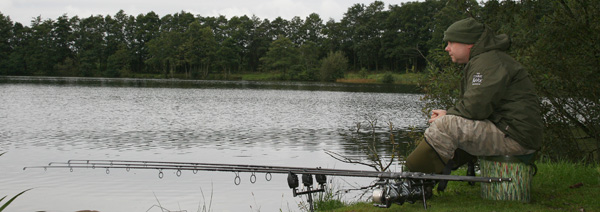
In an ideal world
For me the ultimate way to approach a campaign on a water would be if I could get down to the water regularly, by this I mean every day but if not, at least twice a week. I would introduce large quantities of good quality bait, my first choice is boilies and always NashBait, I rate it highly and for me it’s a proven winner and a proper carp food.
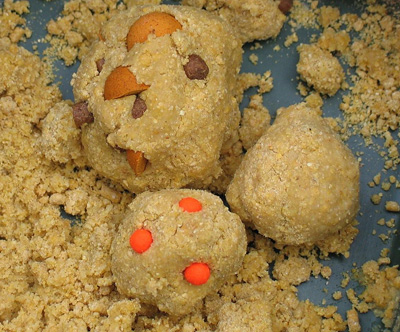 Typical examples are the new Monster Squid, what a bait that’s turning out to be! Or one of my perennial favourites Scopex Squid or Monster Pursuit, it’s all good! The bait would go into a number of areas on a regular basis, or perhaps just one, depending on the size of the lake.
Typical examples are the new Monster Squid, what a bait that’s turning out to be! Or one of my perennial favourites Scopex Squid or Monster Pursuit, it’s all good! The bait would go into a number of areas on a regular basis, or perhaps just one, depending on the size of the lake.
The amount of bait obviously is dependent on the number and size of fish present, but it’s important not to under estimate just how much bait active happy carp can polish off when they are hungry, you may have to allow some for the bird life too.
Once the fishing starts, I would arrive and put around 5kg of bait out at the beginning of the session, fish for three nights if possible and, whether I had caught or not, I would top the area up with another good helping of bait on my departure. I’d then aim to get back three or four days later and do it all again.
This method of fishing can be deadly as I have witnessed with my own eyes. With the bait going regularly into the same areas, the fish become confident and feed with enthusiasm and soon they begin to think of it as a regular or even a ‘natural’ food source.
Keeping the bait going in, in sufficient quantities to keep the fish preoccupied, is the key and I have seen this method take apart a low stock, big fish water. By doing almost exactly as I have described above the angler in question was unstoppable and by carefully picking an area he could fish from a few different pegs he was able to get on the fish every time he went.
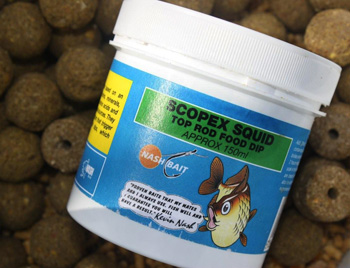 In the real world
In the real world
Now most anglers, me included, do not have the time or resources to carry out a campaign on this scale. Personally I live far too far away from my chosen waters to contemplate taking on a campaign like this, we have to cut our cloth to suit. Another factor is that with most waters seeing huge angler pressure, regular baiting up and establishing areas and being sure of gaining access to them during your time on the bank is near impossible. So what are we to do?
You need to take every situation on its own merit. Watercraft and experience gained on the banks of your target water will play a huge part in the decision making process when you arrive at the lake and start fishing.
Making it Happen
Understanding your water, knowing what’s worked before and keeping an eye on what others are getting up to are all important aspects of the baiting jigsaw. Rather than just baiting those spots and sitting on our hands waiting for something to happen, we need to do more.
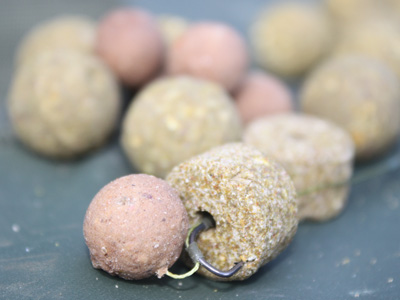 Fishing for a bite with just a mouthful of food makes a good start, then maybe trickle some bait in over a few hours, keeping the scent of food in the area and having bait at different stages of breakdown in our swim will keep the carp focussed and revisiting our spots.
Fishing for a bite with just a mouthful of food makes a good start, then maybe trickle some bait in over a few hours, keeping the scent of food in the area and having bait at different stages of breakdown in our swim will keep the carp focussed and revisiting our spots.
This is where baits such as Chain Reaction and Soluballs really score and if you know how to get the best out of them they can provide a major edge. The matching Food Dips can also be used to coat a percentage of the baits. Even when the boilies and background feed is gone, the Food Dip leaves behind a kind of residue that can keep drawing them back for more. Using these products over the length of a typical session you can feed and build your swim in a similar way to a matchman, it’s just the time scale that differs.
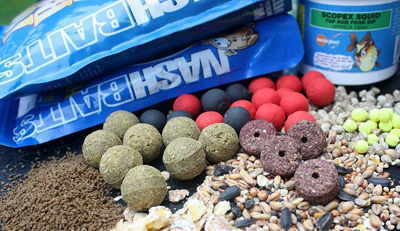 Know your quarry
Know your quarry
It’s important to understand the habits or the likes and dislikes of your target fish, do the fish in your lake spook off bait hitting the water? Do they tend to get caught over bait that has been out there for days, is this bait they have visited regularly and only once have they deemed it to be safe to feed on?
It can be a head wrecker but knowing your quarry, experimenting and fine tuning and being prepared to make changes on the day is the key! Thinking about it, the old adage of ‘you can’t take it out once you have put it in’ comes to mind.
What type of bait is another quandary we face? Some waters are absolute suckers for the spod approach, particle and pellet spod mixes fished in a fairly tight area, are widely used with great success on some of the more prolific venues. But do you follow the crowds when you fish these lakes or do you look at using another tactic to try to be different? There will be days when a particular method will be unbeatable, but it’s on those days during periods when the fish have been battered on a particular method when you often have to think outside the box.
Big fish tactics
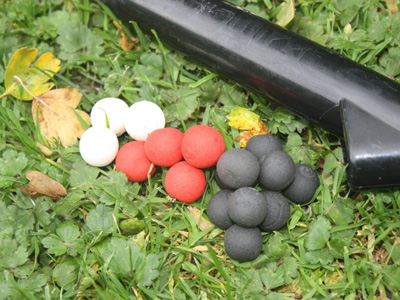 A more match orientated approach definitely seems to work for the smaller fish but how many anglers utilise these tactics for bigger carp? And what about method feeders, groundbaits and other alternative ‘little and often’ tactics, could this be the way to trip up a big old elusive carp?
A more match orientated approach definitely seems to work for the smaller fish but how many anglers utilise these tactics for bigger carp? And what about method feeders, groundbaits and other alternative ‘little and often’ tactics, could this be the way to trip up a big old elusive carp?
Interesting idea and one I’m thinking about experimenting with, but for larger carp at the moment I still favour the ‘boilies only’ approach, but even with just boilies there are plenty of alternative ideas to try.
I think that those bigger fish do prefer to feed on a boilie that provides them with valuable food but rather than fish a bed of baits all of a uniform size and shape, I prefer to mix up the sizes and shapes as well as sometimes feeding two different flavour of boilie, colour mixtures are worth trying too.
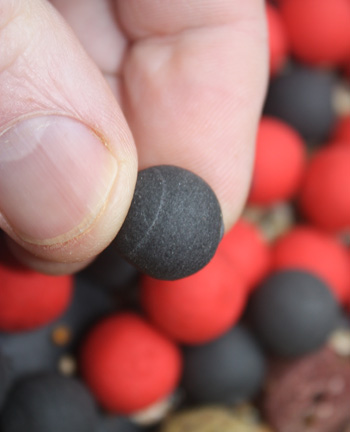 By doing this I believe I’m making the hook bait less obvious. I also like to scatter my bait over a largish area to make the carp move about in the swim hunting for food. I think if a large carp is feeding on a concentrated pile of feed then it’s more likely to be a hard carp to hook. Encouraging the carp to upend and move between baits means your rig has a far better chance of working correctly and hooking the fish.
By doing this I believe I’m making the hook bait less obvious. I also like to scatter my bait over a largish area to make the carp move about in the swim hunting for food. I think if a large carp is feeding on a concentrated pile of feed then it’s more likely to be a hard carp to hook. Encouraging the carp to upend and move between baits means your rig has a far better chance of working correctly and hooking the fish.
If we are lucky enough to get a fish do we feed again? For me a lot depends on what bait has already gone in and what I am trying to achieve in the first place. Was I fishing for a single fish? If so I would probably lay the same trap again, on the assumption that all the bait has probably gone and the tactic has worked. But if I had laid out a big bed of bait and I had not had much activity in the swim, rolling, line bites etc then I might leave it alone for a while as there may be catchable fish around that I may spook by putting bait over their heads.
There are probably more questions than answers in this article but hopefully I’ve got you thinking which can only help us all to put more fish on the bank! There are so many variables involved and bait application is only one of them, but it is an important one and one I am still trying to come to terms with. Master it and you’ll be a massive step closer to being the carp angler that you really want to be!













